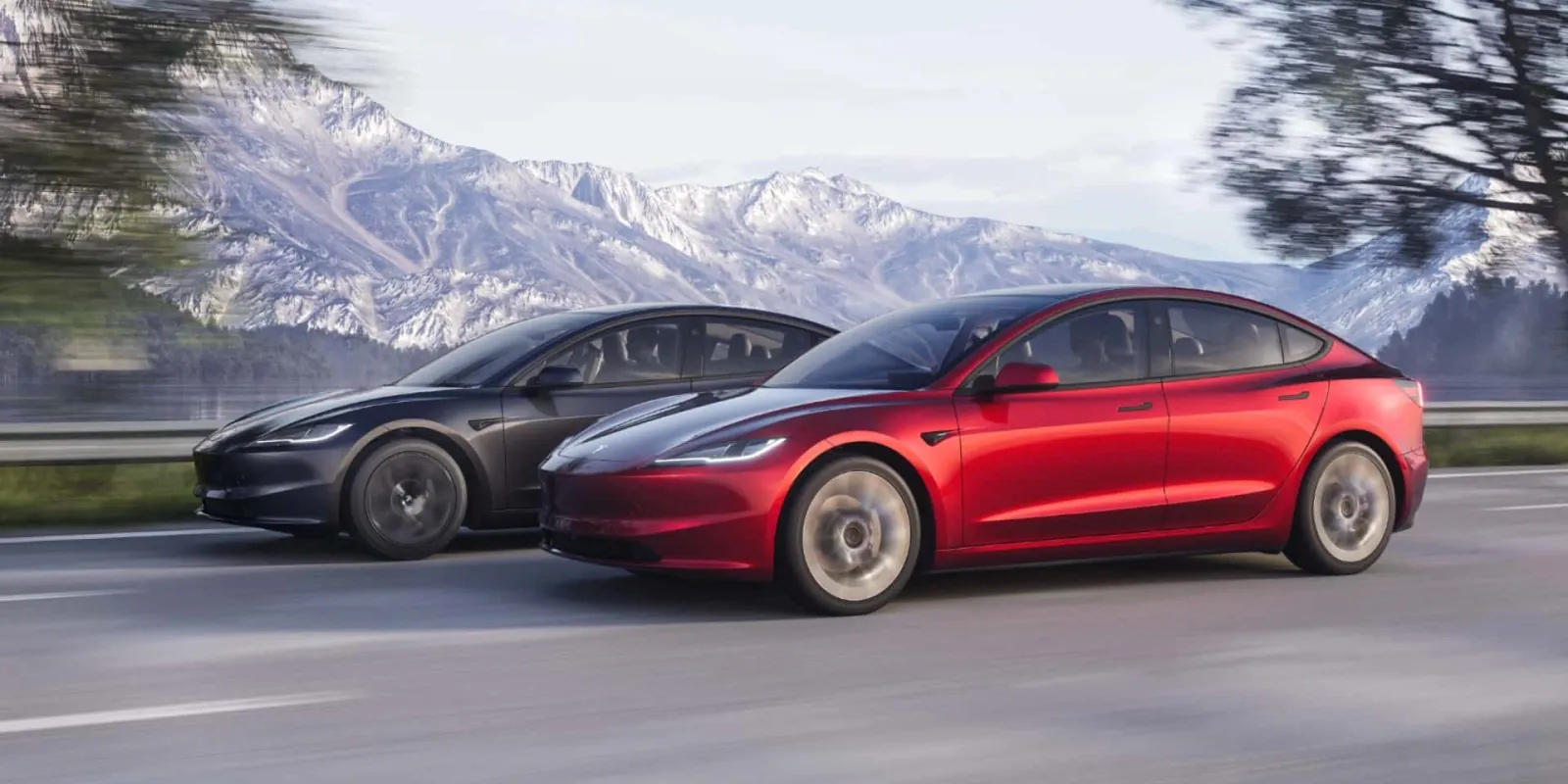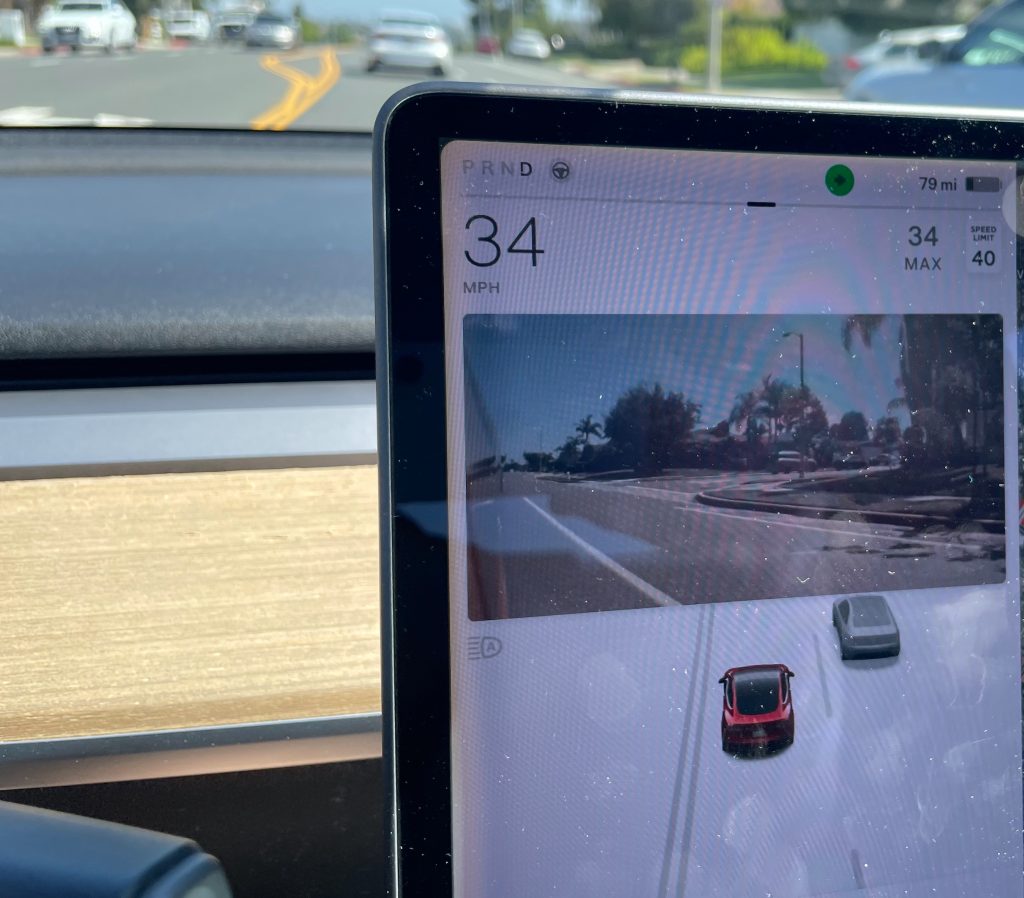
Tesla revealed the Model 3 Highland refresh last week with a lot more features than we expected, but one oft-requested feature was missing. But now, Tesla has updated the Model 3 Owner’s Manual in the EU, which shows that a genuine blind spot indicator is included with the refresh.
Blind spot indicators have become a standard feature on many cars in recent years, giving a visual indication to drivers whether another vehicle happens to be alongside them in a difficult-to-see location when changing lanes.
But Tesla so far has not had this feature. Until now, it has relied on its Autopilot camera system and its visualization features to provide drivers with more information on what might be in their blind spots.
These features bring up a view of the side camera whenever a driver uses the turn signal, allowing the driver to see what’s there, and shows a visualization of the area around the car and the other vehicles in that area.

But the issue here is that this means drivers need to look down and to the side at the vehicle’s center screen instead of looking out the windows/mirrors at what’s beside them when making a driving maneuver. It’s not too bad, but it’s not ideal, and at this point, many drivers are accustomed to having indicator lights near the A-pillar or on the side mirrors.
The situation is a little different on Model S and X, where those visualizations are provided in the driver’s instrument cluster, an additional screen in front of the driver, which the Model 3 does not have. This is a little easier for drivers to see than the center screen, but it’s still not the ideal situation when a driver is looking to their left or right to change lanes.
So finally, in the new Model 3 Highland refresh, we’re getting actual blind spot indicators inside the speaker grille next to the A-pillar. The European Model 3 owner’s manual shows what it will look like, and we’ve also seen it working for a short moment in a YouTube review of the car.
However, the Owner’s Manual does specifically say driver door. And we’ve only seen the LED light on that side, not on the passenger side. So this blind spot indicator might only be on the driver’s side of the vehicle, not the passenger side, which seems odd. Driver side blind spots are more pronounced because it’s harder to crane your neck around in that direction, but if it’s cheap and simple enough to add the indicator to one side, why not the other side too?
We have no indication that Tesla has added any new sensors to the vehicle, so it seems likely that it’s using the car’s autopilot cameras to detect cars in the blind spot, then lighting up the light if it detects one there when you’re trying to change lanes.
So far, this is the only Tesla to have a blind spot indicator. We don’t know if this feature will come to other cars any time soon, if it will only come to other models as part of a large refresh, or if Tesla only plans to put it on certain vehicles. (Ror example, perhaps it thinks the driver instrument cluster on the S/X will be enough.)
Electrek’s Take
Tesla has been known for “going its own way” in terms of standard features for quite some time, usually trying to leverage the many Autopilot cameras around the vehicle in order to replace sensors or indicators that come standard on other cars.
Top comment by maXXis1
Ventilated seats and blind spot monitor are welcomed improvements. Now we can only ask for a few other basic things available in practically every car. Proper rain sensor. Stalks (especially for turn signals and wipers/washer activation). Rear cross traffic alert. Reliable (radar based ?) ACC. 360 view.
In this order for me
We’ve seen several examples of this, such as the “deep neural net” camera-based rain sensors (which don’t work great – mine triggered from seeing Styrofoam bits on the highway once), the vision-based park assist (which also doesn’t work great), and the removal of radar from its autopilot hardware (which is now going back in).
So it’s a bit of a surprise to see Tesla relent and move toward a standard detection feature that most other cars have, given that it has mostly been moving away from such in recent years.
I personally think that the blind spot cameras + visualization were pretty good and easy to use, so it’s interesting for Tesla to relent on this feature rather than some other ones that are a clear downgrade from industry-standard sensors. And strange if it’s only on one side, but we’ll have to wait for confirmation of that.
For more on the Model 3 Highland, check out our closer look at the Model 3 Highland from the IAA in Munich in this YouTube video below, though we didn’t get to test out the blind spot indicator ourselves on the show floor.
FTC: We use income earning auto affiliate links. More.






Comments